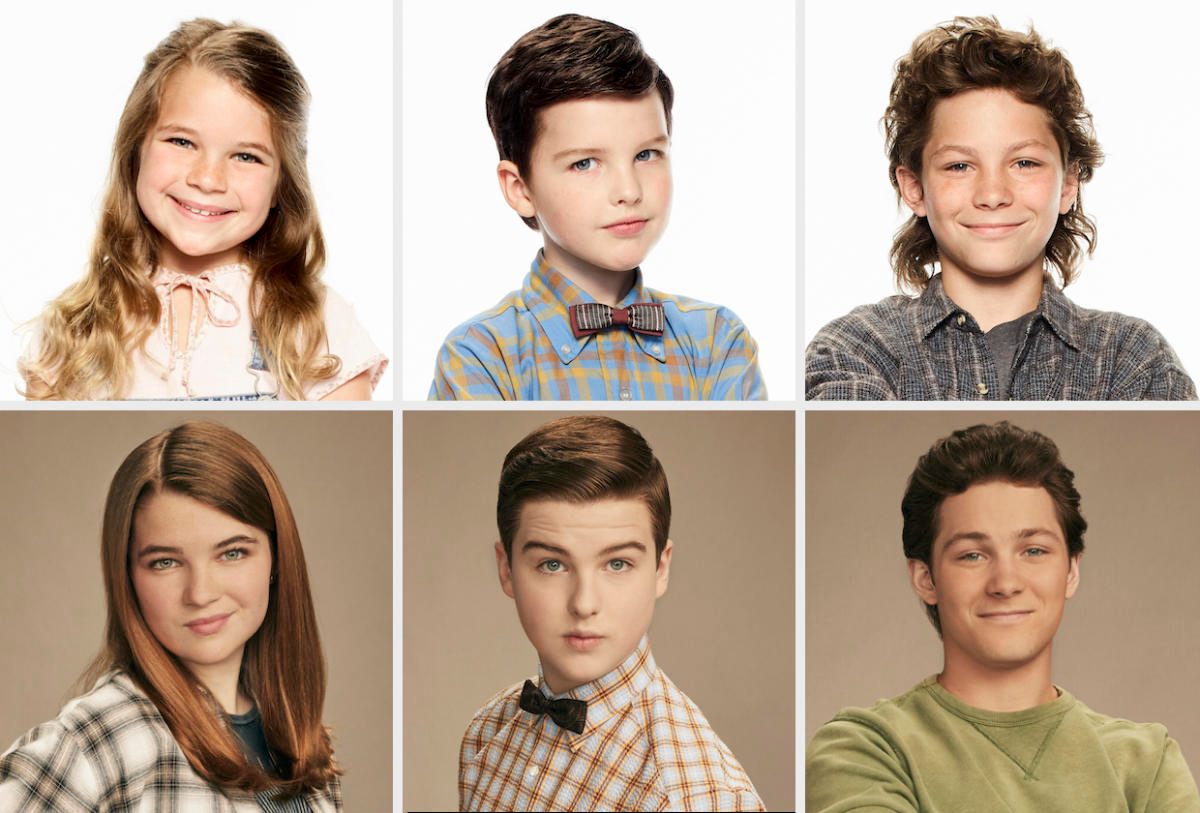
After seven seasons of heartfelt family moments, quirky science facts, and surprising character arcs, CBS’s Young Sheldon wrapped up its series finale with an emotional goodbye. But hidden beneath the tears and tributes, there was something subtle—something deeply nostalgic.
The finale secretly brought back the show’s original premise—a core concept that had been slowly forgotten over the years.
And for longtime fans? It was the full-circle moment they didn’t know they needed.
So… What Was Young Sheldon Originally About?
The Premise That Started It All
When Young Sheldon premiered in 2017, the core pitch was simple:
What was Sheldon Cooper like as a child genius growing up in small-town East Texas?
It was meant to be a prequel to The Big Bang Theory, diving into:
-
Sheldon’s early brilliance
-
His struggles fitting in
-
His academic journey
-
His relationship with his unique family
The original framing even included Jim Parsons’ narration, tying the past directly to the future Sheldon we knew and loved.
How the Show Drifted From Its Original Premise
From Child Prodigy to Family Ensemble
As the show progressed, something happened. The focus shifted. While Sheldon remained central, the stories began to revolve more around the Cooper family, especially:
-
Georgie’s career and relationships
-
Missy’s struggles as the “normal” twin
-
Mary’s faith
-
George Sr.’s career and eventual death
-
Meemaw’s adventures (and illegal gambling business)
Sheldon’s genius became less of a plot engine and more of a background trait. At times, Young Sheldon felt more like a Southern family dramedy than a tale about a prodigy navigating a world that doesn’t understand him.
The Finale’s Quiet Shift Back
The Spark of the Original Concept Reignites
In the final episodes, especially the two-part finale, the show subtly refocused on what it originally promised: Sheldon’s journey from East Texas to Caltech.
We watched:
-
His emotional reaction to George Sr.’s death (a major influence on future Sheldon)
-
His struggles with leaving his family behind
-
His narration by adult Sheldon (Jim Parsons) reflecting on what it all meant
-
And most importantly: his first steps into the academic world that would define his future
It wasn’t flashy or over-explained. But it was deliberate.
The Symbolic Train Ride That Brought It All Home
Sheldon’s Journey Begins—Literally
The final scene of the series?
Young Sheldon sitting on a train—alone, heading toward Caltech.
For fans of The Big Bang Theory, this was rich with symbolism. Sheldon’s love of trains has always been more than a quirk—it represented his need for order, comfort, and control in a world that often overwhelms him.
This moment wasn’t just nostalgic—it was the perfect metaphor for the entire show’s premise:
A brilliant boy on a journey that no one around him could understand.
Jim Parsons’ Voiceover Returns—And So Does Amy
Connecting the Past to the Future
The finale brought back Jim Parsons not just for narration, but in a rare surprise cameo—alongside Mayim Bialik as Amy. It was the first time adult Sheldon appeared physically in the prequel.
Their appearance grounded the finale in Big Bang continuity, but more importantly, Parsons’ reflections tied the show back to its roots.
He shared how much his family shaped who he became—not just intellectually, but emotionally. And with Amy teasing the idea of their own son (Leonard) being a genius, it felt like a baton pass.

Fans React to the Full-Circle Ending
“This Is What We Signed Up For”
Social media lit up with posts like:
“They really ended it the way they started it—genius storytelling.”
“I didn’t even realize how far the show had drifted until the finale pulled it back.”
“That train ride DESTROYED me.”
“Jim and Mayim showing up? Tears. All the tears.”
Fans appreciated that the finale didn’t just say goodbye—it reminded them why they fell in love with the show in the first place.
Why the Original Premise Mattered So Much
More Than Just a Kid Genius
The brilliance of Young Sheldon wasn’t in showcasing scientific genius—it was about the isolation, the awkwardness, and the growth of someone who never quite fit in.
Bringing that theme back in the final moments—Sheldon leaving the only world he knew—was a powerful emotional payoff.
What This Means for the Big Bang Theory Universe
Will There Be More? Possibly. But This Was the End of the Beginning.
CBS has already greenlit a new Big Bang spinoff in development, but Young Sheldon’s finale felt like a true bookend.
From this point on, Sheldon becomes the man we meet in Pasadena.
And as much as fans want more, it’s clear: this part of the story is finished.
Final Thoughts – A Quiet Masterstroke of Storytelling
It would’ve been easy for Young Sheldon to go out with a bang (pun intended). Instead, it chose something braver: a soft, poignant return to its roots.
After years of exploring the lives of the entire Cooper clan, the finale reminded us:
This was always Sheldon’s story.
Not with a dramatic twist. Not with a shocking revelation. But with a train, a goodbye, and a quiet young boy heading toward a brilliant, lonely, extraordinary future.
FAQs
1. What was the original premise of Young Sheldon?
The show was created to explore Sheldon Cooper’s early life as a child prodigy growing up in a conservative Texas town.
2. How did the show drift away from its premise?
Over time, it evolved into a family ensemble, focusing heavily on the other Coopers and their personal storylines.
3. How did the finale return to the original idea?
The final episodes centered on Sheldon’s grief, his decision to leave for Caltech, and his future, tying the story back to The Big Bang Theory.
4. Did adult Sheldon appear in the finale?
Yes! Jim Parsons and Mayim Bialik appeared physically in the final episode, giving fans a direct link between the past and future.
5. Is this really the end of Young Sheldon?
Yes, the series is officially co
